As a parent, one of your most important responsibilities is ensuring your baby’s oral health. While this may seem like a daunting task, selecting the right tools can make the process easier and more enjoyable for both you and your little one. Among the options available, two popular choices for cleaning your baby’s teeth and gums are the finger toothbrush for babies and the traditional baby toothbrush. But which one is better? Let’s break down the differences and benefits of each to help you make an informed decision for your baby’s oral care.
1. What Is a Finger Toothbrush for Babies?
A finger toothbrush for babies is a small, soft brush that fits over an adult’s finger, making it easy to clean your baby’s teeth and gums. Unlike traditional toothbrushes, which have handles, a finger toothbrush is designed for a more hands-on approach. These brushes often come with gentle bristles or a textured surface to clean gums and teeth effectively.2. What Is a Traditional Baby Toothbrush?
A traditional baby toothbrush is designed specifically for infants and toddlers, usually with a small, soft head and a short handle. These brushes are intended for babies who have already begun to grow their first teeth and are more comfortable with the traditional brushing motion. They are typically used when babies are ready to transition to brushing their teeth on their own with parental guidance.3. Advantages of Using a Finger Toothbrush for Babies
The finger toothbrush for babies offers several unique advantages. First, it gives parents more control during brushing. Since the brush fits directly on your finger, it allows you to gently rub your baby’s gums and teeth with precision. This design also ensures that the brushing process is less intimidating for babies, especially those who may be sensitive to having something in their mouth.4. Advantages of Using a Traditional Baby Toothbrush
Traditional baby toothbrushes are designed to mimic adult toothbrushes, which can be helpful when introducing your child to proper brushing habits. These brushes come with handles that allow older babies and toddlers to hold the brush themselves as they grow more independent. The traditional design can also make it easier for parents to apply gentle pressure on the baby’s gums and teeth.5. Comfort and Sensitivity: Finger Toothbrush vs. Traditional Toothbrush
The finger toothbrush for babies is often softer and gentler on delicate gums and teeth. Many finger toothbrushes are made from BPA-free materials that are gentle, flexible, and comfortable for babies. The finger design also allows parents to control the amount of pressure they apply during brushing, ensuring a more comfortable experience for the baby. On the other hand, traditional baby toothbrushes can sometimes be bulkier and harder to maneuver, especially for babies who are not yet accustomed to having a toothbrush in their mouth. However, they are still soft enough to avoid causing any discomfort, provided you choose the right brush.6. Gum Care with Finger Toothbrush for Babies
Using a finger toothbrush for babies offers significant benefits for gum care. The gentle bristles or textured surfaces of these brushes are perfect for massaging and stimulating your baby’s gums. This is especially important during the teething phase when babies experience discomfort. A gum brush for infants can help soothe tender gums, providing relief and promoting better oral health.7. Gum Care with Traditional Baby Toothbrush
A traditional baby toothbrush, while effective for cleaning teeth, may not provide the same level of gum care as a finger toothbrush. Many traditional toothbrushes are designed for brushing teeth and may not have the soft, flexible bristles that a finger toothbrush offers for massaging gums. However, it’s still a good idea to choose a toothbrush with extra soft bristles to ensure gentle gum care.8. Ease of Use: Finger Toothbrush vs. Traditional Toothbrush
When it comes to ease of use, the finger toothbrush for babies has a clear advantage. Since it fits over an adult’s finger, there is more flexibility and control when brushing. This design allows parents to navigate their baby’s mouth without worrying about accidentally poking their baby with the toothbrush handle. Traditional baby toothbrushes require parents to guide their child’s brushing motion, which can be trickier with a squirming baby. However, as babies grow older and begin to learn how to hold their own toothbrush, they may develop more independence with traditional brushes.9. Cleaning and Maintenance
Both the finger toothbrush for babies and traditional baby toothbrushes require regular cleaning to maintain hygiene. The finger toothbrush is easy to clean because it’s small and can be sterilized by boiling or washing it in warm soapy water. You’ll also want to sterilize it regularly to avoid bacteria buildup. Traditional toothbrushes can be a bit more challenging to clean, especially if they have small nooks and crannies. However, they can be rinsed thoroughly and are generally safe when washed properly after each use.10. When to Transition from Finger Toothbrush to Traditional Baby Toothbrush
Most parents start using a finger toothbrush for babies when their little ones are between 0 and 18 months old. This tool is especially helpful for cleaning gums and the first few baby teeth. However, as your baby grows and more teeth emerge, it may be time to transition to a traditional baby toothbrush. By 18 months, your baby will likely be ready for a larger toothbrush that can handle the growing number of teeth.Frequently Asked Questions
-
Can I use a finger toothbrush for babies even if my baby has teeth?
Yes! A finger toothbrush can be used even after your baby’s first teeth appear. It’s gentle on the teeth and gums and is a great tool for cleaning new teeth. -
Should I use toothpaste with the finger toothbrush for babies?
Yes, you can use a small amount of kids natural toothpaste when using a finger toothbrush. It’s important to choose a toothpaste that is safe for babies, such as the best fluoride toothpaste for toddlers or the best toothpaste for children. -
Is it necessary to buy both a finger toothbrush and a traditional baby toothbrush?
Not necessarily. If your baby is still in the early stages of teething, a finger toothbrush for babies is usually sufficient. However, as your child grows, transitioning to a traditional baby toothbrush may be beneficial for teaching them brushing techniques.



